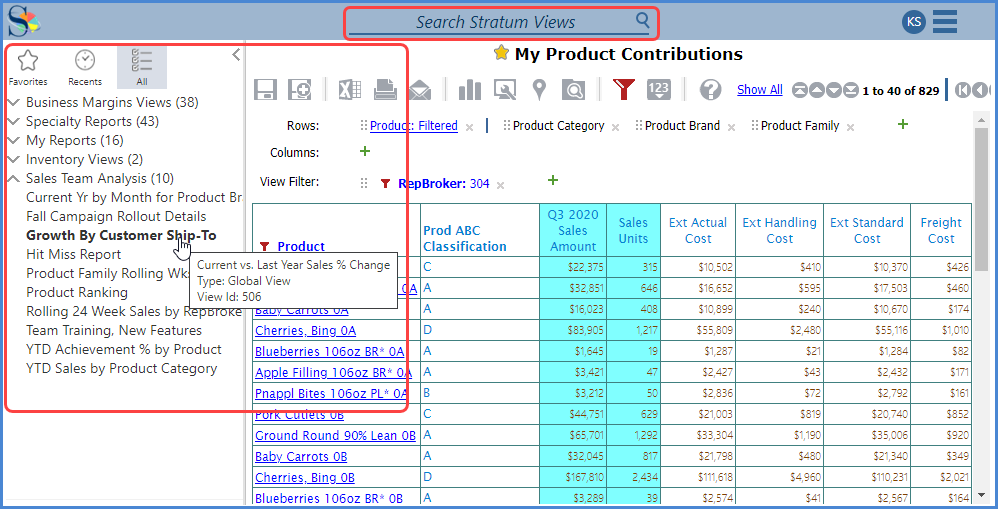
You can see and run views from tabs in the Stratum View Pane. You also can search for views using the search field at the top of Stratum.Viewer. Views you mark as Favorites show in the Favorites tab. Views recently ran will show in the Recents tab. The All tab is where you’ll find all of the global and shared views your user profile gives you access to as well as all of your own personal views. You won’t be able to see or run the personal views of other users.
Click to run a view from the Stratum View Pane or right click to see an option to run it in a new browser tab.

The lists below summarize what users can do with different types of views, which is also impacted by their level of access in Viewer (casual, advanced, view administrator, or security administrator).
Casual and advanced users can do the following:
Mark views as their Favorites and access their favorite and recent views from the respective tabs in the Stratum View Pane.
Run any global or shared views that are in their view groups.
Run their personal views from their view groups.
Edit or delete the personal or shared views that they own.
Create a personal or shared view by doing a Save As on any existing view to which they already have access.
Open links to any type of view from Viewer-generated emails – for example, links to a global view, shared view, or someone else’s personal view. Viewer security will be applied when the user runs the link so the user only sees view data applicable to their role in Viewer.
Advanced users can add any view to actions they own.
Customize display options while using a view. For example, lock rows and columns, change the page size for views that use paging, or control the display of All Others and Totals on rows and columns. They can also change the overall look of the grid including background color, borders, and fonts.
Use the Navigation Panel to customize the order or data and add or delete hierarchies from the view.
Add, edit, or delete the following in views: filters, sorts, measure items, levels, attribute relationships, and charts.
Administrators can do all the things noted in the prior list, in addition to being able to:
Create and manage global views.
Edit, archive, or delete any view.
Create any type of view from scratch via the View list window or by doing a Save As on any existing view.
Add any view to any action.